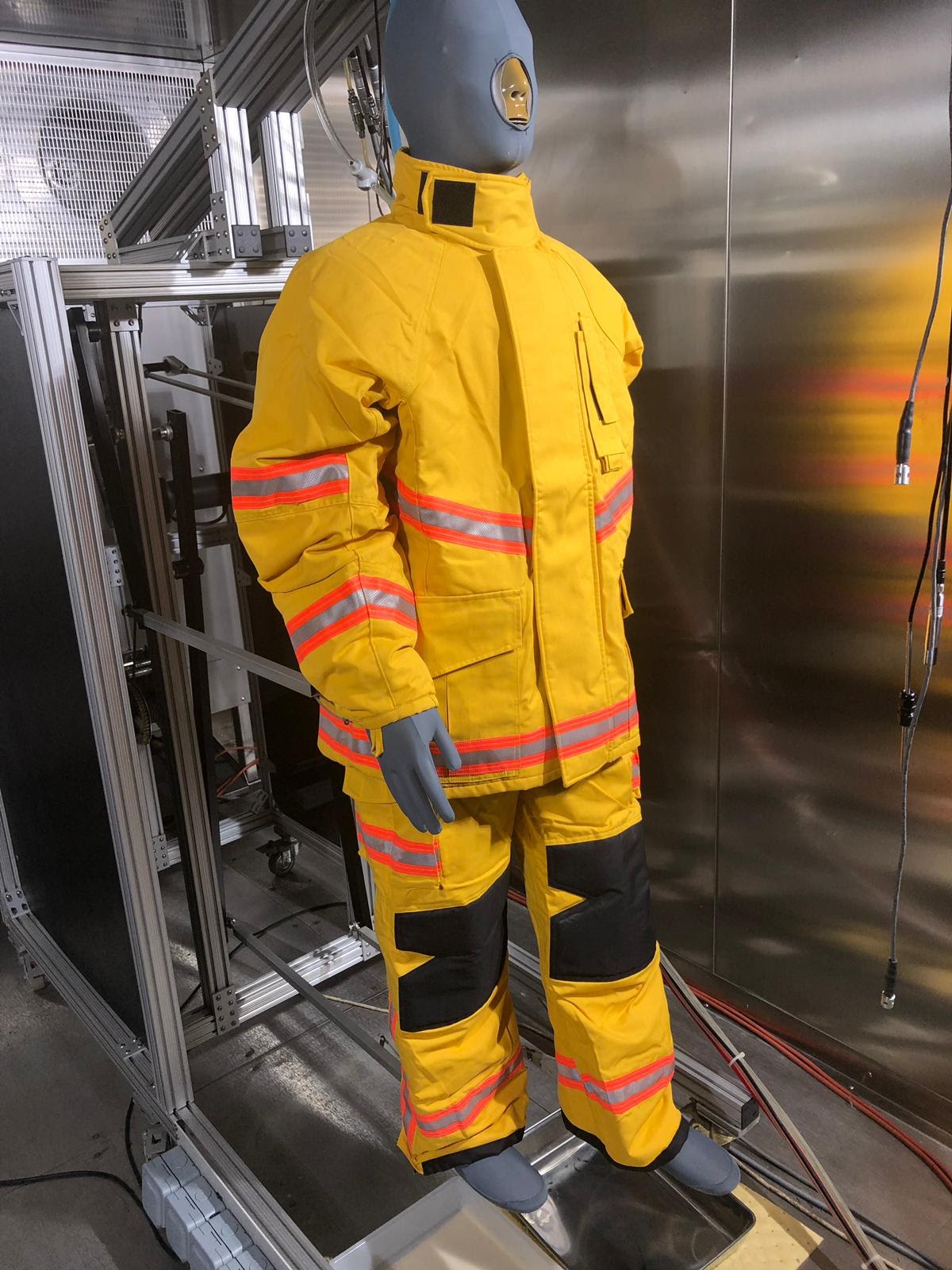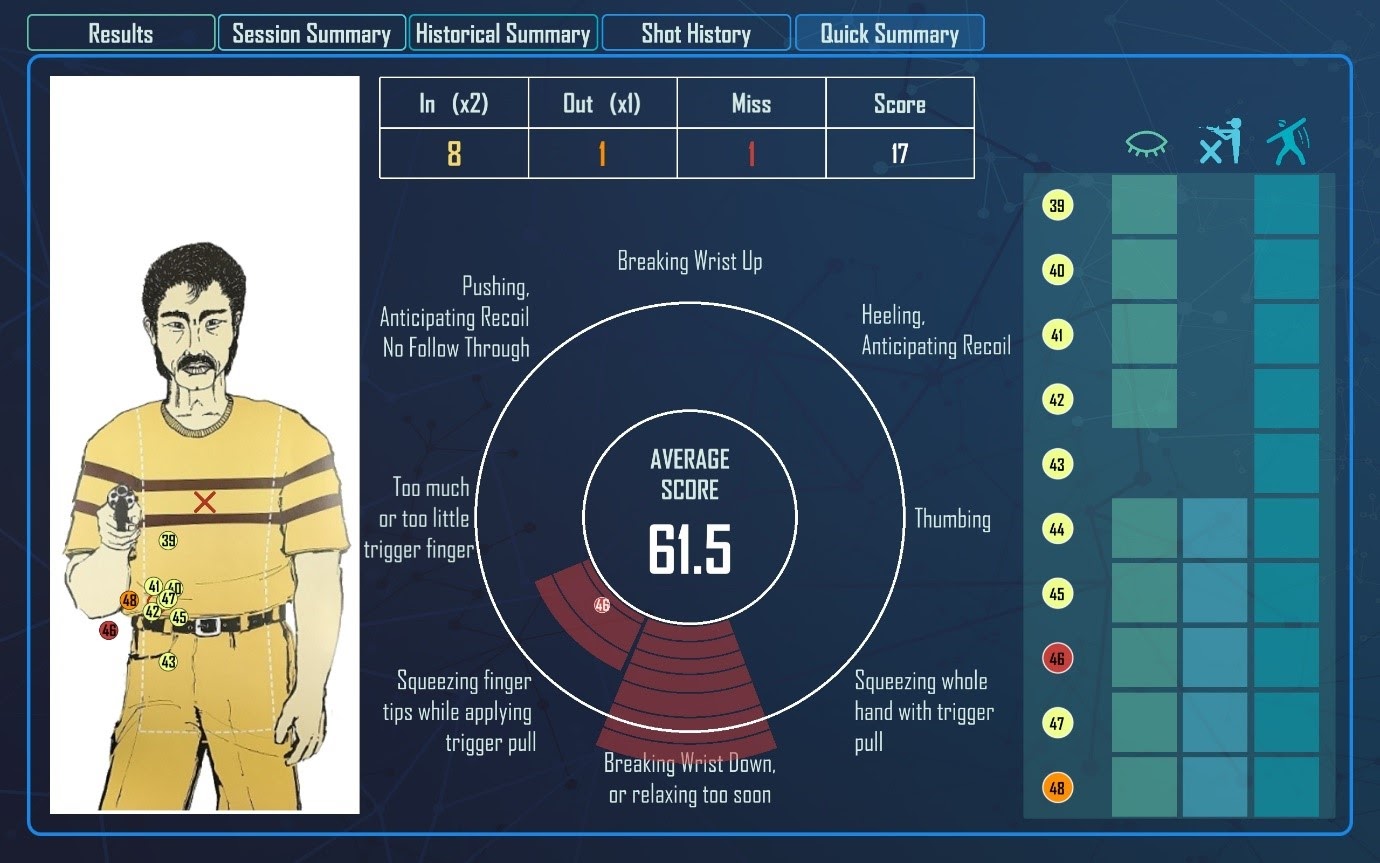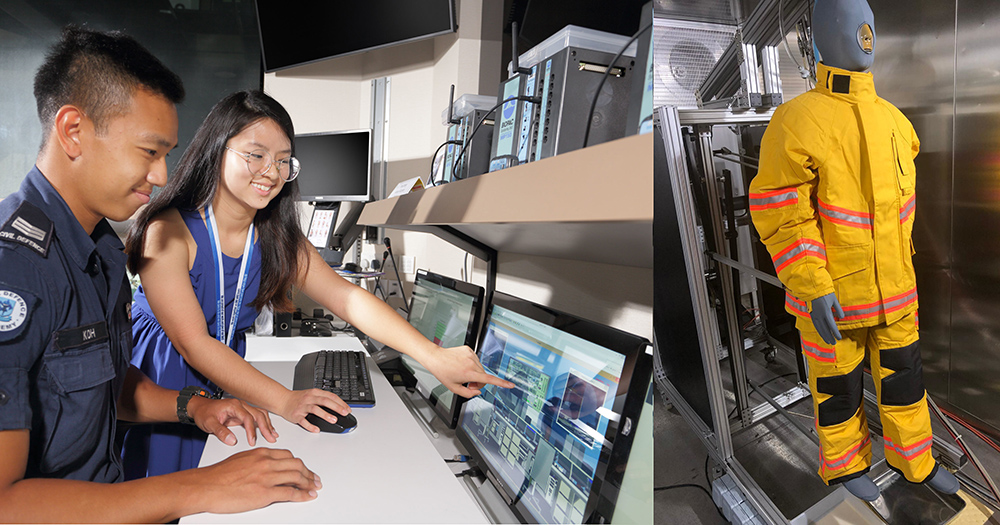Most of us probably don’t give much thought to the uniforms worn by police and firefighters, or the vehicles that they drive in.
After all, the sights of the outfits and vehicles are something that we have come to simply just recognise, whenever we see an officer show up, ready and alert, at the scene of a crime or fire/accident, or when we cross the checkpoints.
But such features, that we might perhaps have come to take for granted, involve much effort behind that contributes to the performance of Home Team officers.
The work that goes into such enhancement is done by the Human Factors and Simulation Centre of Expertise (HF&S CoE), which is also part of HTX (Home Team Science & Technology Agency).
Making uniforms “smarter”
Granted, we may perhaps assume that there has been a certain level of engineering which has gone into the firefighting outfits that have at least been designed to resist high levels of heat.
Beyond that, a significant amount of research and science is invested into the uniforms’ design and optimisation, so as to help policemen and firefighters alike perform their jobs more efficiently, and even reduce the risk of injury such as heat exhaustion and fatigue.
Here, the research and work by the HF&S team can include evaluating suitable textiles, devices or prototypes via tests on a manikin in a thermal chamber which can simulate the conditions in Singapore’s humid weather.
 Source: HTX
Source: HTX
For example, in the case of the suits for firefighters, a high degree of evaporative resistance is particularly important as the intense heat they are dealing with means that there is a need to protect them from dehydration.
In addition, the manikin can also ‘sweat’: a process by which distilled water in a separate canister is channelled into the manikin and emerges from pores on its surface through capillary channels.
This is where the tests help the HF&S team evaluate the evaporative resistance properties of a chosen textile.
Leveraging technology to improve performance during emergencies
In addition, HF&S CoE also makes extensive use of technology to work on improving the performances of Home Team officers during emergencies.
To train officers in handling various emergency scenarios, simulations are carried out in the form of Extended Reality (XR) Simulation Systems.
An example of this development is EXCEL, where the HF&S team works with SCDF to develop a fitness conditioning and enhancement lab to optimise the training efficacy for the officers while improving their performance and safety.
Features include facilities that can simulate different climate conditions and even an eye-tracking station to train firefighters on situational awareness so that they are able to better access what action needs to be taken before they enter an emergency zone.
Training marksmen with state-of-the art firing range system
Another example is the current development and testing of the Enhanced Live Firing Range System (ELFRAS) where the HF&S CoE works with the Police to improve the firearm competency of police officers.
Here, multiple sensors capture human factors such as weapon handling, breathing, shooting posture, gaze fixation and visual alignment of the officer.
An embedded Advance Performance Enhancement & Analysis Range System (APEARS) software analyses the data collected through these sensors and provides real-time recommendations to help improve the officer’s subsequent shots.
 Source: HTX
Source: HTX
Securing Singapore with AI
The HF&S team also plays a key role in shoring up the security of Singapore’s borders, such as the design of certain checkpoint systems.
The work can cover a wide range of areas, from the use of biometric screening technologies for immigration clearance, to the use of AI to assist officers to detect threats during baggage screening.
Tests in these areas are often carried out as simulations in a lab within the HF&S Human Performance Centre.
For example, examining how officers work with AI-enhanced screening systems in sieving out threats such as firearms, sharp objects like knives, IEDS (improvised explosive devices) and contraband drugs during baggage screening.
The tests therefore run across a range of different scenarios, with varying levels of involvement by the AI.
The results of the tests are then factored into the design of such screening systems for enhanced border security.
Addressing fatigue using sensory technology
No less important is the HF&S team’s ongoing work on a system that will be able to potentially respond to an officer experiencing fatigue within their workspace.
When the officers are tired, this system can automatically inject invigorating scents and lighting to perk them up and boost their concentration.
All in all, pretty neat, once you consider the extent to which every facet of a Home Team
officer’s job is backed by such extensive science.
Whether it is adapting uniforms and vehicles to enable officers to tackle the various scenarios they face, improving firearm competency of police officers or design of some border checkpoint systems, the work of HF&S covers a wide spectrum and are integral to enhancing the performance of Home Team officers.
This sponsored article made the author appreciate just how far science has come in helping the Home Team maintain public safety.
Top image collage by HTX
If you like what you read, follow us on Facebook, Instagram, Twitter and Telegram to get the latest updates.
